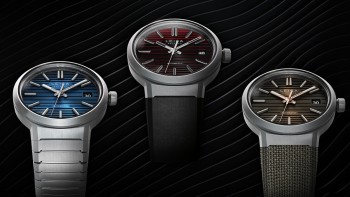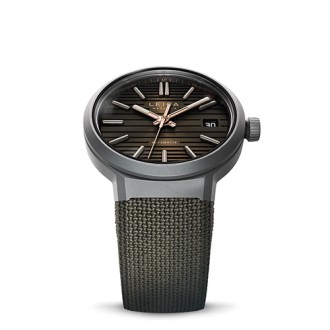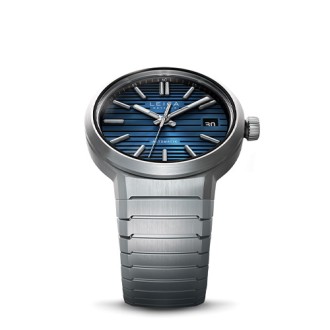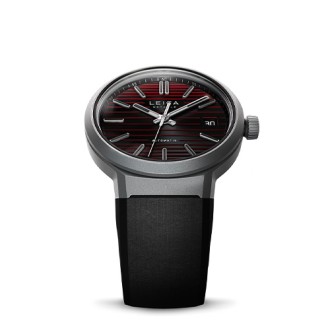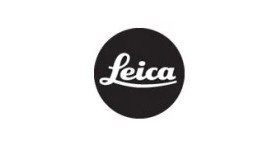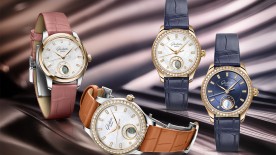A camera is a machine that, by capturing light, allows us to essentially preserve a moment for eternity. Famed German camera maker Leica may be a newcomer to the realm of watchmaking, but they know a thing or two about timing, about precision mechanics and about creating objects that last. The new Leica ZM11 is a contemporary design, with an interchangeable integrated bracelet, that reinterprets the identity of this iconic brand for modern lovers of horology. WorldTempus sits down with Daniel Blunschi and Marcus Eilinger, co-managing directors of Leica’s watch department, to find out what’s behind the dial of their latest creation, why playfulness is important to Leica, and who the ZM11 is designed for.
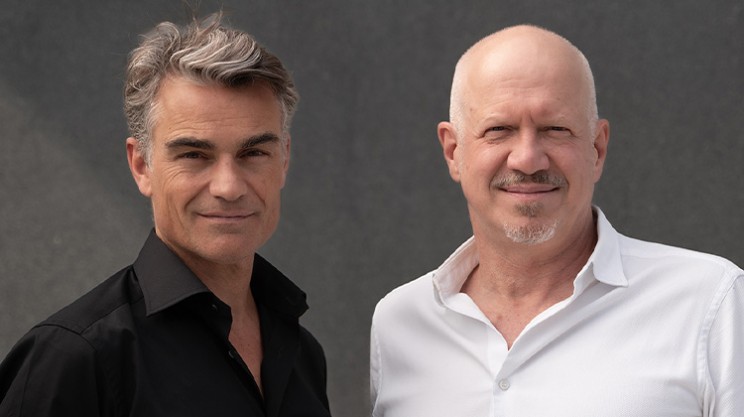
Suzanne Wong
The new collection of Leica watches, the ZM11, speaks to a different audience — we could say it represents a new generation of timepieces at Leica, compared to the ZM1 and ZM2. Could you tell us about this change and what motivated this decision?
Marcus Eilinger
I wouldn't say change — even the word “evolution” might be too strong here — but more of an extension. We started off with something solid and highly innovative, which was the Z1 and Z2. Now, with the ZM11, we’re extending the product offering.
Daniel Blunschi
But you're right, in that we’re speaking to a different audience with the ZM11. You used the phrase “new generation”, but we don’t consider the ZM1 and ZM2 to be “first-generation”, because they are not going away; they are here to stay. These pieces form our Meisterkreis (top-of-the-line German manufacturing excellence), with a price point of 10,000 euros and higher. You see the patented push-crown, and they were created with the Leica customer in mind. The ZM11 approaches a different customer.
Suzanne Wong
I see, so the ZM11 isn’t at all a linear evolution of what you first created with the Z1 and Z2. It’s a new segment for Leica timepieces, both in terms of a distinct design and price point.
Marcus Eilinger
We now have two different collections that extend and complement each other; they give more alternatives to our customers. Just as we have with Leica cameras: there is the SL camera, which has a very professional appeal, and then you have the compact models like the Q and M cameras. We can offer the same choice of alternatives in our watch collections. The ZM11 has this versatility to it; it fits any occasion. It has a Swiss movement, and it represents the contemporary aspect of being a part of the international Leica community, as compared to the stronger traditional aspect that we see in the ZM1 and ZM2, which are completely made in Germany.
Daniel Blunschi
If you look at the movement of the ZM11 next to the movements of the Z1 and Z2, that shows what we were discussing quite well. You see the same techniques of sandblasted surfaces with brushed edges, but executed differently. In the Z1 and Z2, the movement bridges follow these curved lines and have a more traditional shape. For the Z11 movement, Marcus chose to have more straight lines, so it was more engine-like.
Suzanne Wong
When we spoke on previous occasions, we talked about how certain brands are very closely associated with a particular culture, and that their products need to remain consistent with that. A French brand, for example, might want to emphasise certain aesthetic or production values to highlight its French identity. As a company, Leica is so strongly linked with German technical excellence. It’s a message that’s reinforced in the Z1 and Z2. With the Z11, you chose to go with a Swiss movement. This is perhaps not the most polished comparison, but if we take the analogy of Leica being a fine German restaurant serving only the finest German cuisine, why is there a Swiss team in the kitchen?
Marcus Eilinger
Quite simply, we had certain requirements for this movement, for this watch, and we went to the best place we could get what we needed.
Daniel Blunschi
Well, the more high-end you go, the more it makes sense, even if we take your restaurant analogy. We’re talking about the sophistication of the creation. If you eat at a Michelin-star restaurant, the nationality of the chef isn’t as relevant, compared to…
Suzanne Wong
I totally see what you mean. If my local Chinese takeaway didn’t have a Chinese person manning the wok, I would probably hesitate to eat there. But according to the Michelin Guide, you can have some of the best French food in the world in Tokyo, prepared by a Japanese chef.
Daniel Blunschi
What’s important for us is that it has to be the best. And Marcus put it perfectly. We had very specialised requirements for the ZM11. It would have been challenging for us to find a German-made automatic movement with the quality that we wanted, in the quantities that we needed, in the time that we had.
Marcus Eilinger
It doesn’t exist.
Daniel Blunschi
In Germany, you can find really good hand-wound movements at a good price, but for automatic movements…
Marcus Eilinger
And most definitely it wouldn’t have been what we had in mind, because we specifically wanted a base calibre. We want to use this calibre again in the future, with additional functions and different variations. The movement for the Z11 has to be something that allows us to grow the collection in the way that we wanted.
Daniel Blunschi
What Chronode can offer us is very interesting for our growth. They are fully into the engineering side of things, and they have calibres that they haven’t commercialised. We’re the first to bring this calibre out commercially, and there’s just so much potential in this relationship.
Suzanne Wong
I’m personally such a big fan of Jean-François Mojon and his work. In his more recent work, we’ve only seen him express himself — horologically, mechanically — in a very Swiss way, and it’s a consequence of who his clients are. But he’s actually very versatile in how he works, and you see that he can easily adapt himself to a more Germanic approach in movement design and construction. Not everyone remembers how instrumental he was in helping IWC to develop their own in-house base movements back in the day, but we need to remember that he doesn’t just do fancy complicated movements. Apologies for yet another analogy, but Jean-François is the kind of guy who can build supercars as well as tanks.
Marcus Eilinger
Yes, and there are many things we can do together. In fact, I already have so many ideas for both our collections. It’s just the beginning of the chapter for us, but the book is filled with blank pages waiting for us to write in them. Of course, there are stories that we won’t tell; stories that don’t really make sense for Leica and for our audience. A double tourbillon, for example, wouldn’t fit in our universe, but a chronograph with a really simple and pure dial definitely could. We don’t go into the extremes of haute horlogerie — we want to focus on functional ways of expressing time.
Suzanne Wong
But if I’m not mistaken, you very much believe as well that a watch should have a sense of playfulness about it.
Marcus Eilinger
That’s why we have the red button, the icon of Leica. On the Z1 it comes as the push-crown, and on the ZM11 you push the red button to change straps. In German we refer to the Haptik, a sense of tactility. It’s extremely important for the consumer, because then they can enjoy the product so much more. We have it in our cameras. And we want to have it in our watches as well, the tactile feedback you have from touching the bracelet links or the sapphire crystal, or from changing the strap.
Suzanne Wong
I agree it’s so important — these little sensory interactions are what create the relationship between you and your watch. Having talked about the Z11’s design, movement and wearability, it seems to me there are three words that characterise a Leica watch. A Leica watch is about purity, it's about performance and it's about pleasure.
Marcus Eilinger
Exactly, absolutely.
